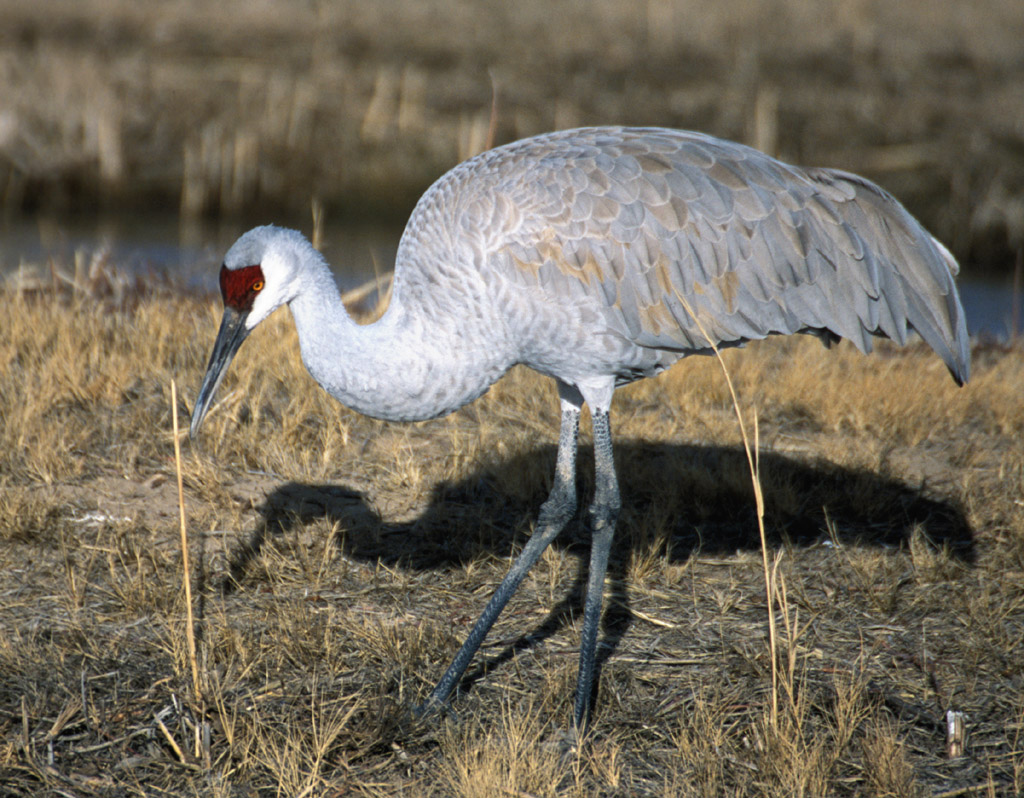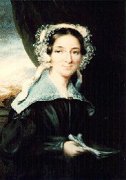|
Nahnebahwequa
Nahnebahwequa (''Naaniibawikwe'' in the Fiero spelling, meaning "Standing-Upright Woman") or Catherine Bunch was an Ojibwa spokeswoman and Christian Missionary. Early life Born in the early fall of 1824 at the Credit River, now called Port Credit, Ontario, Nah ne bah wee qua was the daughter of Bunch Sunego and Mary Polly Crane. Her paternal grandfather was Osunego (''Asanagoo'', "Black squirrel"), a Mississauga Tribal Chief from the Eagle doodem,Bunch Sonigo (Tyetiquob), born 1804; Record of Baptism by Alvin Torry, 1825. Credit Mission Church Records, United Church Archives Toronto and her maternal grandfather was (Otesoo), a War Chief from the Otter Clan who fought for the British Crown in the American Revolutionary War. She was baptized Catherine Bunch by Rev. Thomas Madden in 1825, but later took the name Catherine Brown, after a revered Christian Cherokee convert. Catherine was unofficially adopted by her uncle, Rev. Peter Jones and his English wife, Eliza Field with whom ... [...More Info...] [...Related Items...] OR: [Wikipedia] [Google] [Baidu] |
Peter Jones (missionary)
Peter Jones (January 1, 1802 – June 29, 1856) was an Ojibwe Methodist minister, translator, chief and author from Burlington Heights, Upper Canada. His Ojibwa name was Kahkewāquonāby (''Gakiiwegwanebi'' in the Fiero spelling), which means " acredWaving Feathers". In Mohawk, he was called Desagondensta, meaning "he stands people on their feet". In his youth his band of Mississaugas had been on the verge of destruction. As a preacher and a chieftain, as a role model and as a liaison to governments, his leadership helped his people survive contact with Europeans. Jones was raised by his mother Tuhbenahneequay in the traditional culture and religion of the Mississauga Ojibwas until the age of 14. After that, he went to live with his father Augustus Jones, a Welsh-born United Empire Loyalist. There he learnt the customs and language of the white Christian settlers of Upper Canada and was taught how to farm. Jones converted to Methodism at age 21 after attending a ... [...More Info...] [...Related Items...] OR: [Wikipedia] [Google] [Baidu] |
Doodem
The Anishinaabe, like most Algonquian-speaking groups in North America, base their system of kinship on patrilineal clans or totems. The Ojibwe word for clan () was borrowed into English as totem. The clans, based mainly on animals, were instrumental in traditional occupations, intertribal relations, and marriages. Today, the clan remains an important part of Anishinaabe identity. Tradition The Anishinaabe peoples are divided into a number of , or clans, (singular: ) named mainly for animal totems (or , as an Ojibwe person would say this word in English). In Anishinaabemowin, means heart. or clan literally would translate as 'the expression of, or having to do with one's heart'; in other words refers to the extended family. According to oral tradition, the Anishinaabe were living along the Atlantic Ocean coast and the great beings appeared out the sea and taught the Mide way of life to the Waabanakiing peoples, six of the seven great beings that remained to teach ... [...More Info...] [...Related Items...] OR: [Wikipedia] [Google] [Baidu] |
Elizabeth Field (author)
Elizabeth "Eliza" Field (June 1, 1804 – August 17, 1890) was an English-born Canadian writer and artist. She was also known as Elizabeth Jones, Elizabeth Jones Carey and Kecheahgahmequa. Biography The daughter of Charles Field, a soap and candle manufacturer, and Elizabeth Carter, she was born in Lambeth and attended a boarding school in Surrey. When her mother died in 1820, she returned home to look after her younger brothers and sisters. In 1831, she met Peter Jones, an Ojibwa Methodist minister from Canada who was raising funds to support his missionary work; they married in New York City in 1833 despite opposition by her parents and many of her friends. They settled in a cabin on the Credit River Indian Reserve. She was frequently ill and suffered two miscarriages and two still births. However, she taught the children about Christianity and taught the young girls how to sew. She visited England in 1837–38 with her niece Nahnebahwequa and, when she returned, gave birt ... [...More Info...] [...Related Items...] OR: [Wikipedia] [Google] [Baidu] |
Ojibwe Writing Systems
Ojibwe is an indigenous language of North America from the Algonquian language family. Ojibwe is one of the largest Native American languages north of Mexico in terms of number of speakers and is characterized by a series of dialects, some of which differ significantly. The dialects of Ojibwe are spoken in Canada from southwestern Quebec, through Ontario, Manitoba and parts of Saskatchewan, with outlying communities in Alberta and British Columbia,Nichols, John, 1980, pp. 1-2 and in the United States from Michigan through Wisconsin and Minnesota, with a number of communities in North Dakota and Montana, as well as migrant groups in Kansas and Oklahoma. The absence of linguistic or political unity among Ojibwe-speaking groups is associated with the relative autonomy of the regional dialects of Ojibwe. There is no single dialect that is considered the most prestigious or most prominent, and no standard writing system used to represent all dialects. Ojibwe diale ... [...More Info...] [...Related Items...] OR: [Wikipedia] [Google] [Baidu] |
Michigan
Michigan () is a U.S. state, state in the Great Lakes region, Great Lakes region of the Upper Midwest, upper Midwestern United States. With a population of nearly 10.12 million and an area of nearly , Michigan is the List of U.S. states and territories by population, 10th-largest state by population, the List of U.S. states and territories by area, 11th-largest by area, and the largest by area east of the Mississippi River.''i.e.'', including water that is part of state territory. Georgia (U.S. state), Georgia is the largest state by land area alone east of the Mississippi and Michigan the second-largest. Its capital is Lansing, Michigan, Lansing, and its largest city is Detroit. Metro Detroit is among the nation's most populous and largest metropolitan economies. Its name derives from a gallicization, gallicized variant of the original Ojibwe language, Ojibwe word (), meaning "large water" or "large lake". Michigan consists of two peninsulas. The Lower Peninsula of Michigan ... [...More Info...] [...Related Items...] OR: [Wikipedia] [Google] [Baidu] |
Georgian Bay
Georgian Bay (french: Baie Georgienne) is a large bay of Lake Huron, in the Laurentia bioregion. It is located entirely within the borders of Ontario, Canada. The main body of the bay lies east of the Bruce Peninsula and Manitoulin Island. To its northwest is the North Channel. Georgian Bay is surrounded by (listed clockwise) the districts of Manitoulin, Sudbury, Parry Sound and Muskoka, as well as the more populous counties of Simcoe, Grey and Bruce. The Main Channel separates the Bruce Peninsula from Manitoulin Island and connects Georgian Bay to the rest of Lake Huron. The North Channel, located between Manitoulin Island and the Sudbury District, west of Killarney, was once a popular route for steamships and is now used by a variety of pleasure craft to travel to and from Georgian Bay. The shores and waterways of the Georgian Bay are the traditional domain of the Anishinaabeg First Nations peoples to the north and Huron-Petun (Wyandot) to the south. The bay was th ... [...More Info...] [...Related Items...] OR: [Wikipedia] [Google] [Baidu] |
Wesleyan Methodist Church (Great Britain)
The Wesleyan Methodist Church (also named the Wesleyan Methodist Connexion) was the majority Methodist movement in England following its split from the Church of England after the death of John Wesley and the appearance of parallel Methodist movements. The word ''Wesleyan'' in the title differentiated it from the Welsh Calvinistic Methodists (who were a majority of the Methodists in Wales) and from the Primitive Methodist movement, which separated from the Wesleyans in 1807. The Wesleyan Methodist Church followed the Wesleys in holding to an Arminian theology, in contrast to the Calvinism held by George Whitefield, by Selina Hastings (founder of the Countess of Huntingdon's Connexion), and by Howell Harris and Daniel Rowland, the pioneers of Welsh Methodism. Its Conference was also the legal successor to John Wesley as holder of the property of the original Methodist societies.Davies, R. E. (1985) ''Methodism'', 2nd ed. Peterborough: Epworth Press. ; p. 109. History Although ... [...More Info...] [...Related Items...] OR: [Wikipedia] [Google] [Baidu] |
Garden River (Ontario)
The Garden River is a river in the Algoma District of Ontario, Canada. The rivers source is Saymo lake and Ranger lake(Algoma District) from which it empties into the St. Marys River east of Sault Ste. Marie, Ontario. The river gets its name from vegetable gardens kept by the Ojibwa people in this area. The Garden River First Nation Garden River First Nation, also known as Ketegaunseebee (''Gitigaan-ziibi Anishinaabe'' in the Ojibwe language), is an Ojibwa band located at Garden River 14 near Sault Ste. Marie, Ontario, Canada. The Garden River reserve consists of two non- ... Reserve is located in this area. See also * List of Ontario rivers Rivers of Algoma District {{NorthernOntario-river-stub ... [...More Info...] [...Related Items...] OR: [Wikipedia] [Google] [Baidu] |
Sault Ste
Sault may refer to: Places in Europe * Sault, Vaucluse, France * Saint-Benoît-du-Sault, France * Canton of Sault, France * Canton of Saint-Benoît-du-Sault, France * Sault-Brénaz, France * Sault-de-Navailles, France * Sault-lès-Rethel, France * Sault-Saint-Remy, France Places in North America * Sault Ste. Marie, a cross-border region in Canada and the United States ** Sault Ste. Marie, Ontario, Canada ** Sault Ste. Marie, Michigan, United States * Sault College, Ontario, Canada * Sault Ste. Marie Canal, a National Historic Site of Canada in Sault Ste. Marie, Ontario * Sault Locks or Soo Locks, a set of parallel locks which enable ships to travel between Lake Superior and the lower Great Lakes operated and maintained by the United States Army Corps of Engineers , colors = , anniversaries = 16 June (Organization Day) , battles = , battles_label = Wars , website ... [...More Info...] [...Related Items...] OR: [Wikipedia] [Google] [Baidu] |
Public Auction
In public relations and communication science, publics are groups of individual people, and the public (a.k.a. the general public) is the totality of such groupings. This is a different concept to the sociological concept of the ''Öffentlichkeit'' or public sphere. The concept of a public has also been defined in political science, psychology, marketing, and advertising. In public relations and communication science, it is one of the more ambiguous concepts in the field. Although it has definitions in the theory of the field that have been formulated from the early 20th century onwards, and suffered more recent years from being blurred, as a result of conflation of the idea of a public with the notions of audience, market segment, community, constituency, and stakeholder. Etymology and definitions The name "public" originates with the Latin ''publicus'' (also '' poplicus''), from ''populus'', to the English word ' populace', and in general denotes some mass population ("the ... [...More Info...] [...Related Items...] OR: [Wikipedia] [Google] [Baidu] |
Charles Lindsey (editor)
Charles Lindsey (7 February 1820 – 12 April 1908) was an English-born Canadian journalist, editor, writer, and officeholder. He was the first editor of the ''Toronto Leader'' and published a biography on his father-in-law William Lyon Mackenzie, ''The Life and Times of Wm. Lyon Mackenzie'' (1862). Life and career Charles Lindsey was born 7 February 1820 in Strubby, England, as the third son of Charles and Susannah Lindsey. He graduated from a grammar school in Lincoln and apprenticed at a press there. At 22 he emigrated to the Province of Canada to find employment as a writer. He first joined the staff of a newspaper in Port Hope where he wrote with a Reform slant. In 1846 publisher James Lesslie hired him for the Reformist ''Toronto Examiner''. Lindsey became politically active and met regularly with those who were to form the Clear Grits faction in 1850, and gave voice to their views by publishing the ''North American'' with William McDougall. He was critical of Ro ... [...More Info...] [...Related Items...] OR: [Wikipedia] [Google] [Baidu] |




